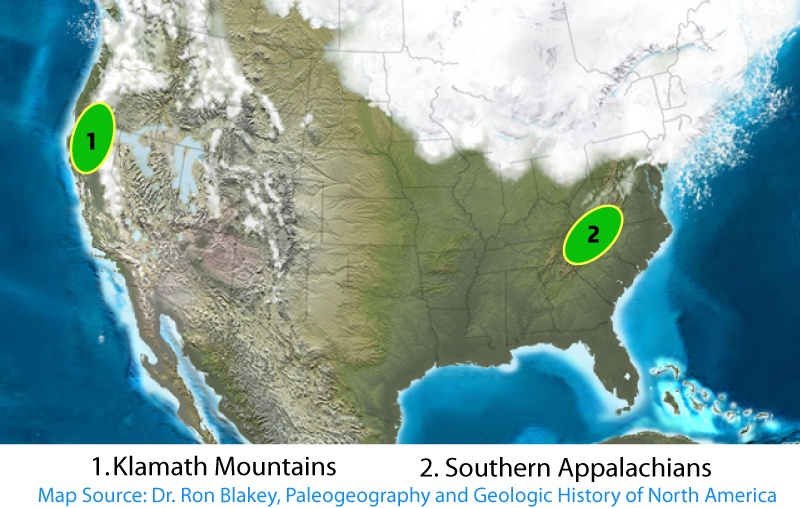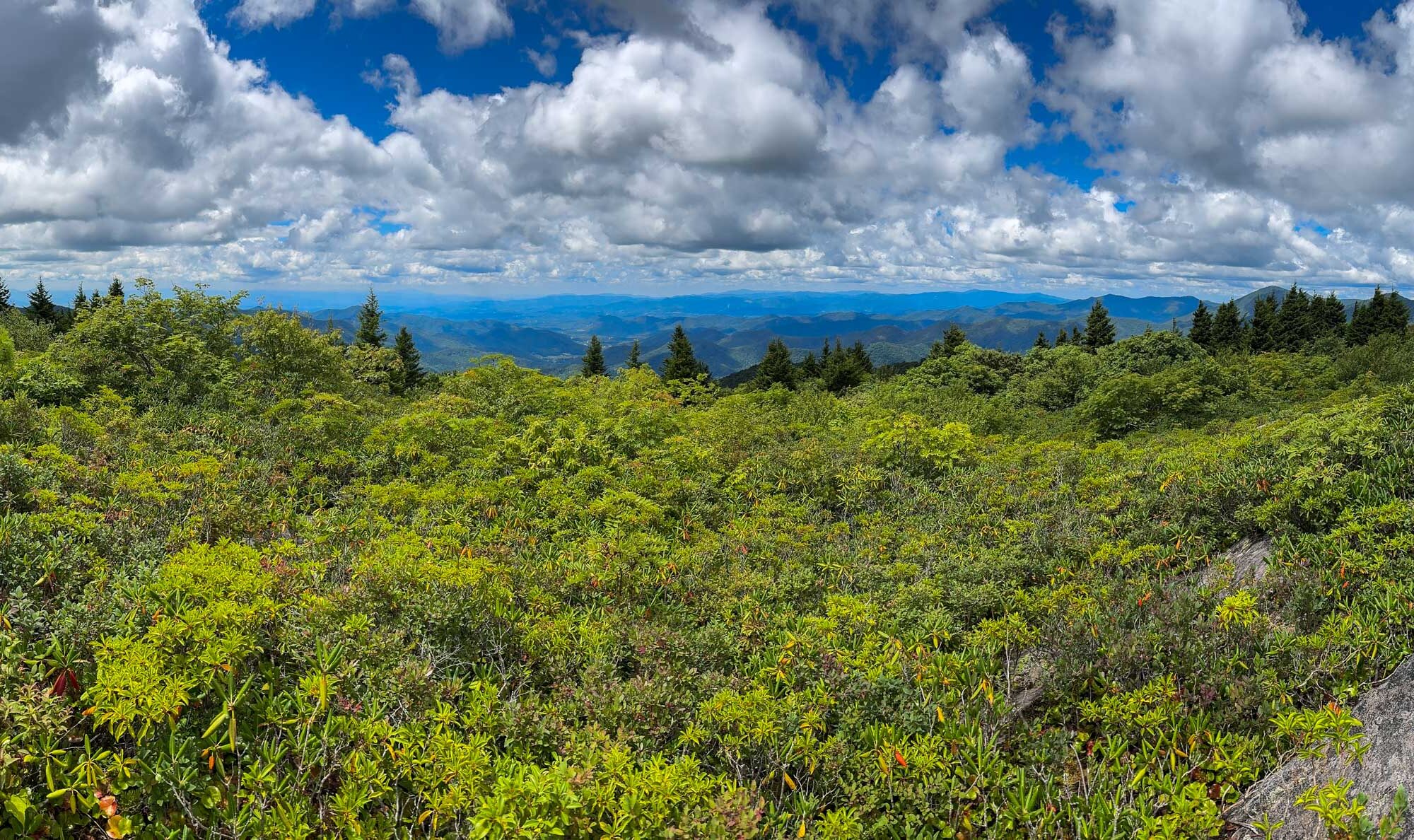With good reason, life brought us back to the southern Appalachian Mountains. My origins are in and around this region. The connection is bolstered by my deep love of the Klamath Mountains and the connections these two places share. We took a family hike–a new joy because our 5-year-old can hike with us now–to a special landscape near Asheville, North Carolina. Here we explored several rock outcrops of the southern Appalachians.
Continue reading “Rock Outcrops of the Southern Appalachians”The Klamath-Appalachian Connection
In the Tertiary, beginning around 65 million years ago [Ma], a temperate forest prevailed unlike any other in Earth’s history. Referred to as the Arcto-Tertiary forest—existing on a landmass that would soon become North America, Europe, and Asia—a blending of conifers and broad-leaved trees dominated the landscape. With continental drift and climate change, the offspring of these great forests were fragmented. Over time, ice ages came and went, causing a change in flora as increasingly dry conditions became more common. The descendants of the Arcto-Tertiary forest became less extensive and more isolated. These progenitors have remained, finding refuge in the higher and cooler regions which maintained a climate more similar to that of the early Tertiary and creating, today, a strong Klamath-Appalachian Connection (see R. H. Whittaker 1961).


